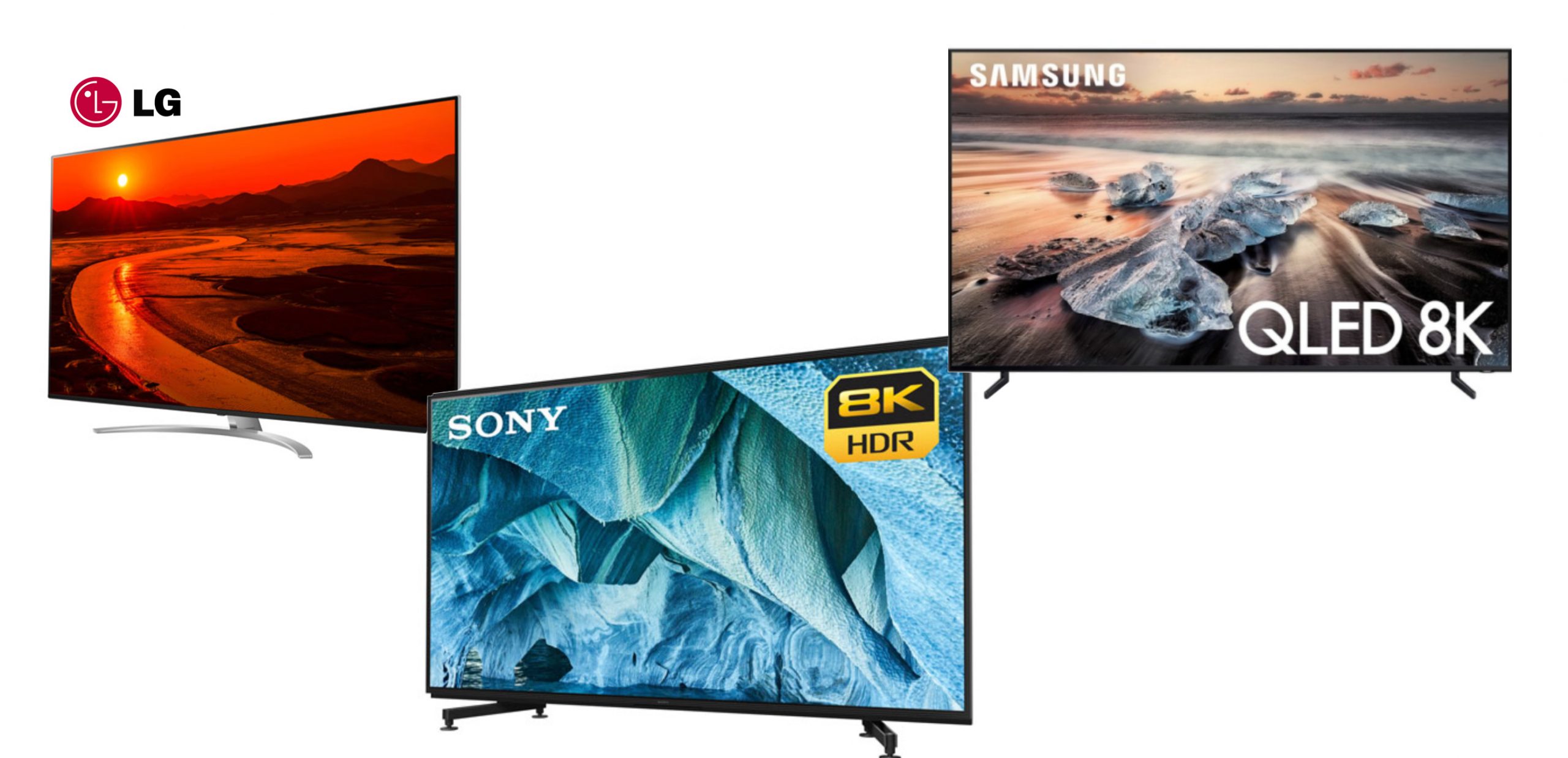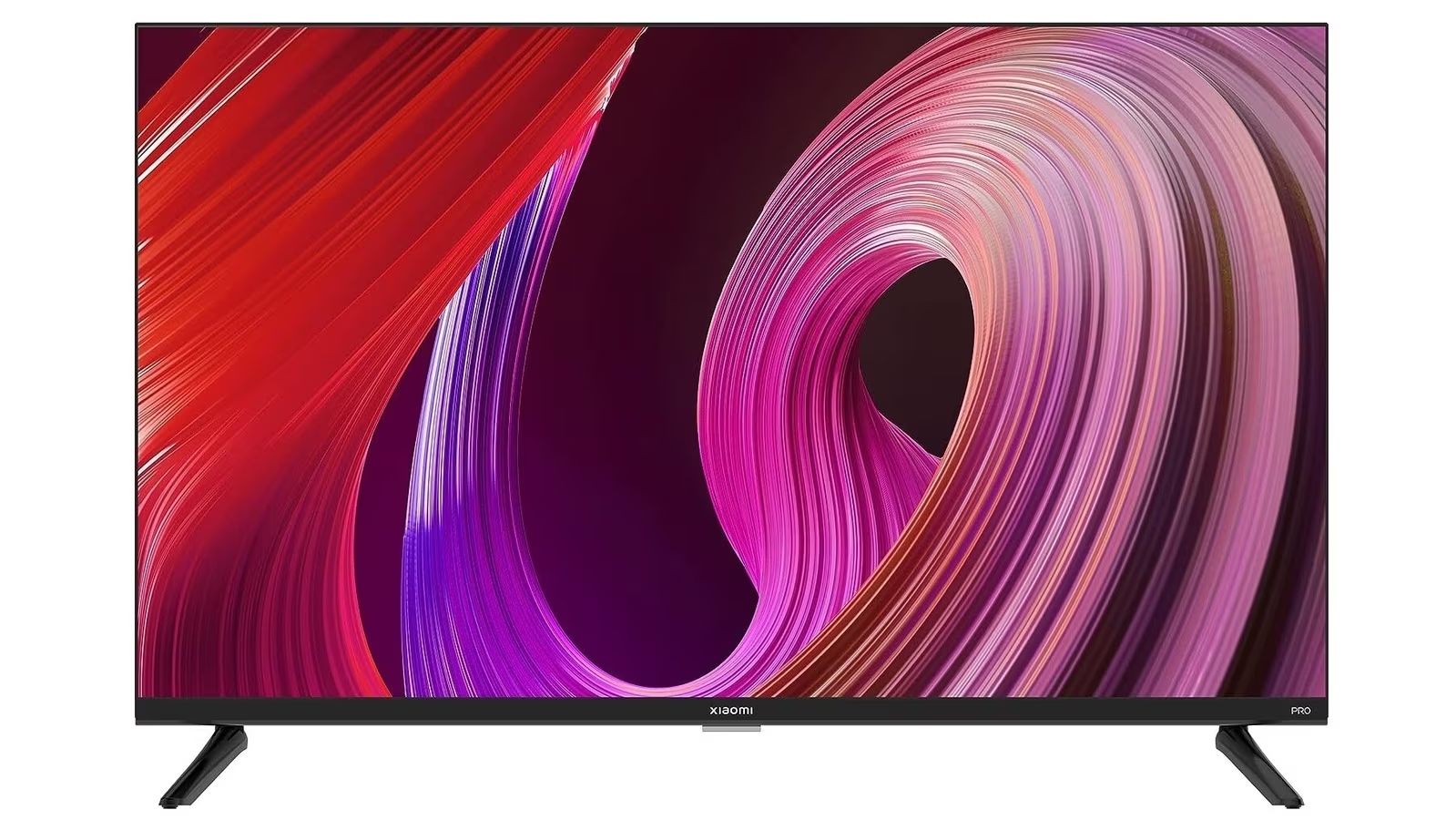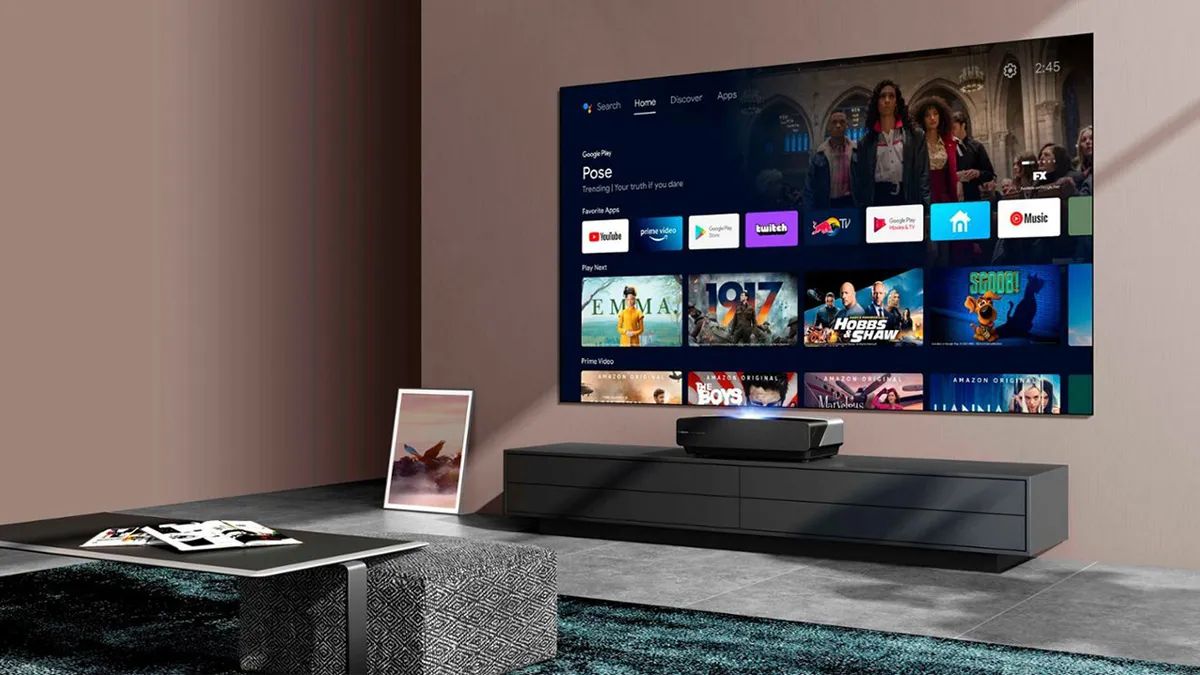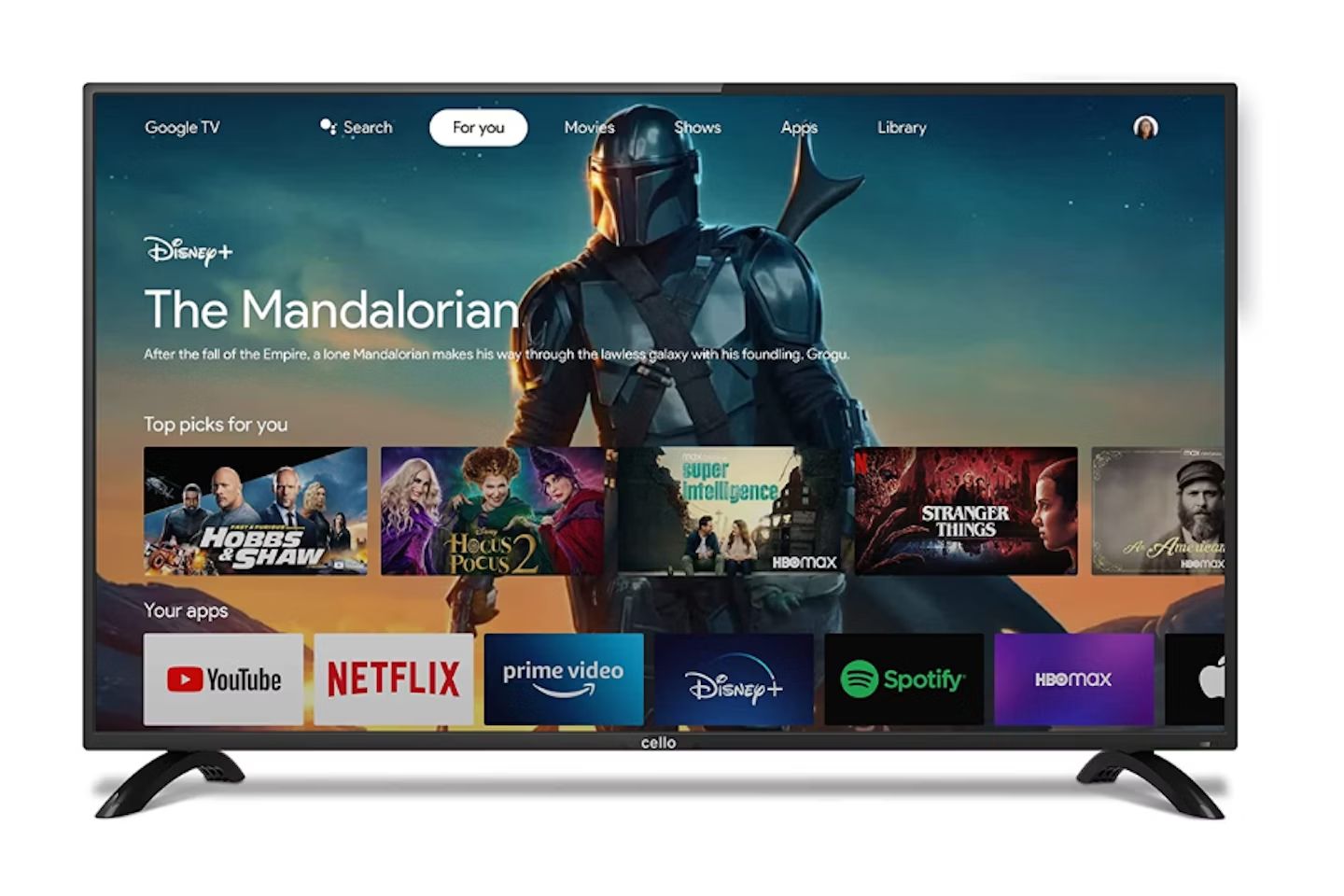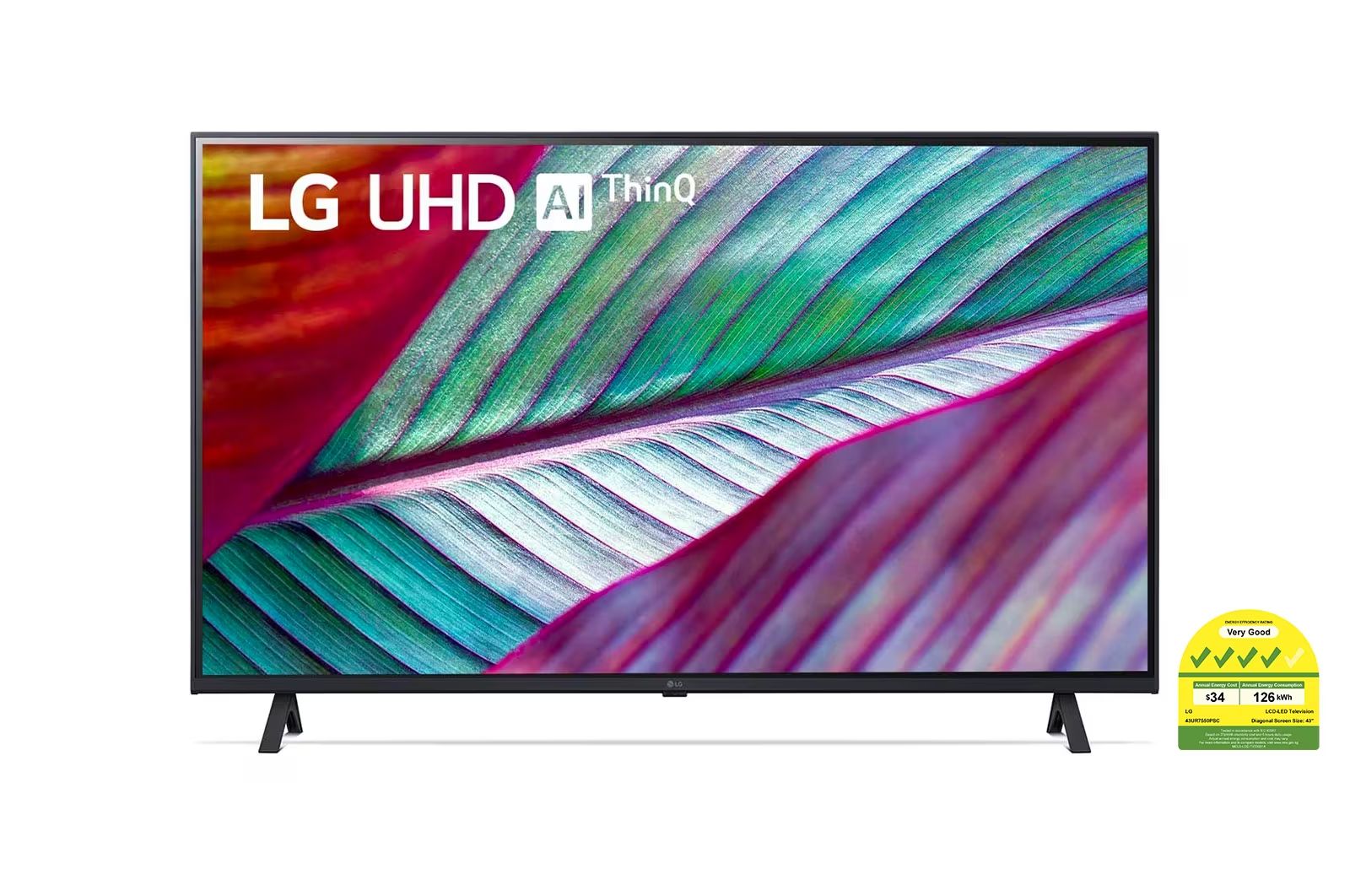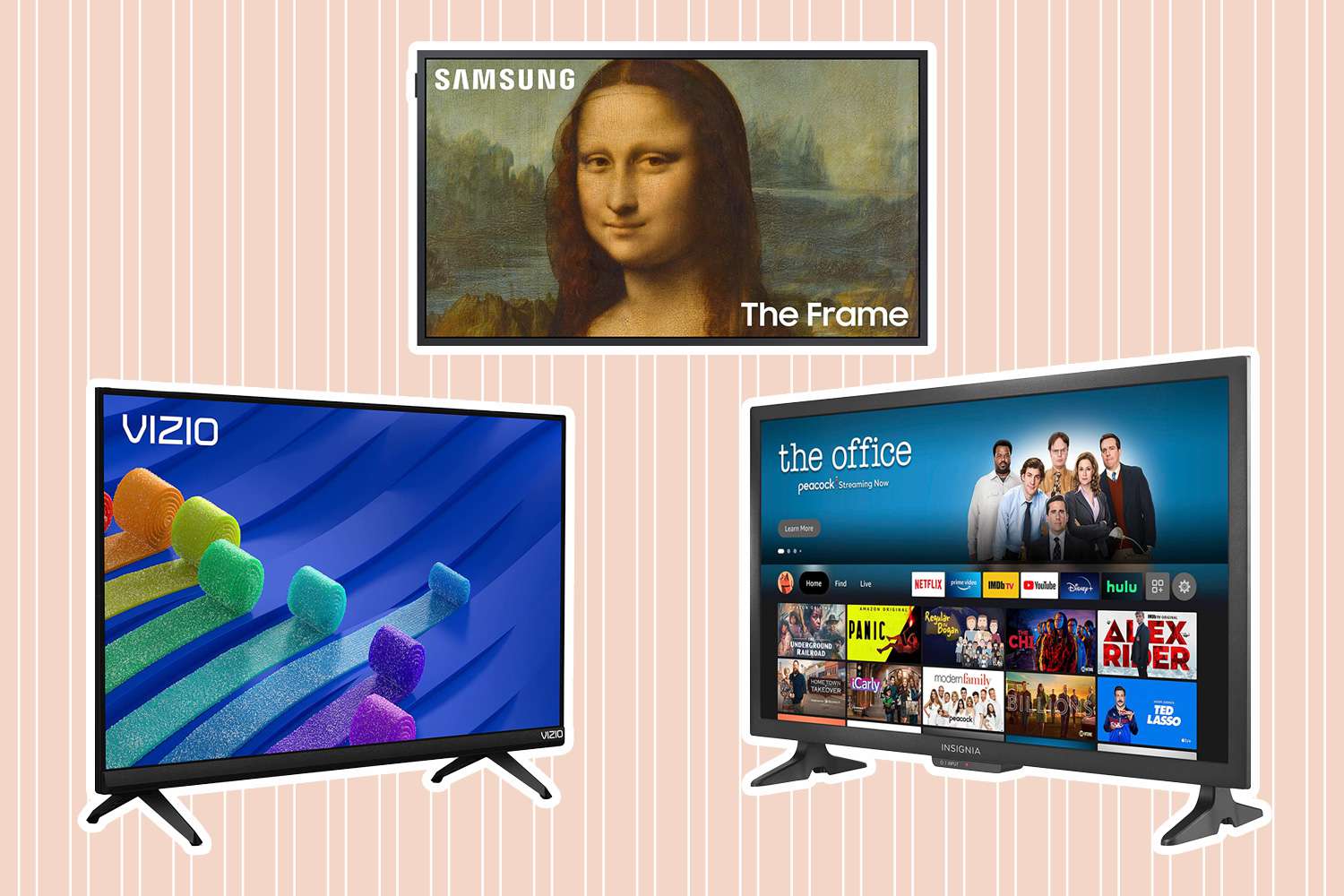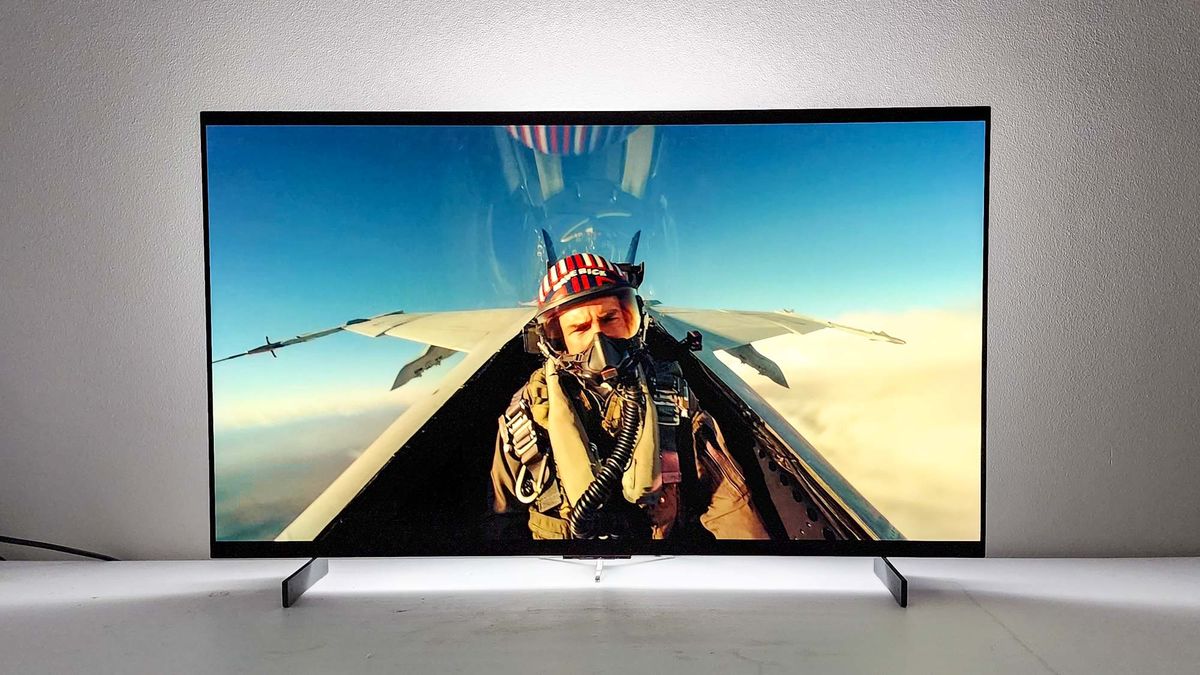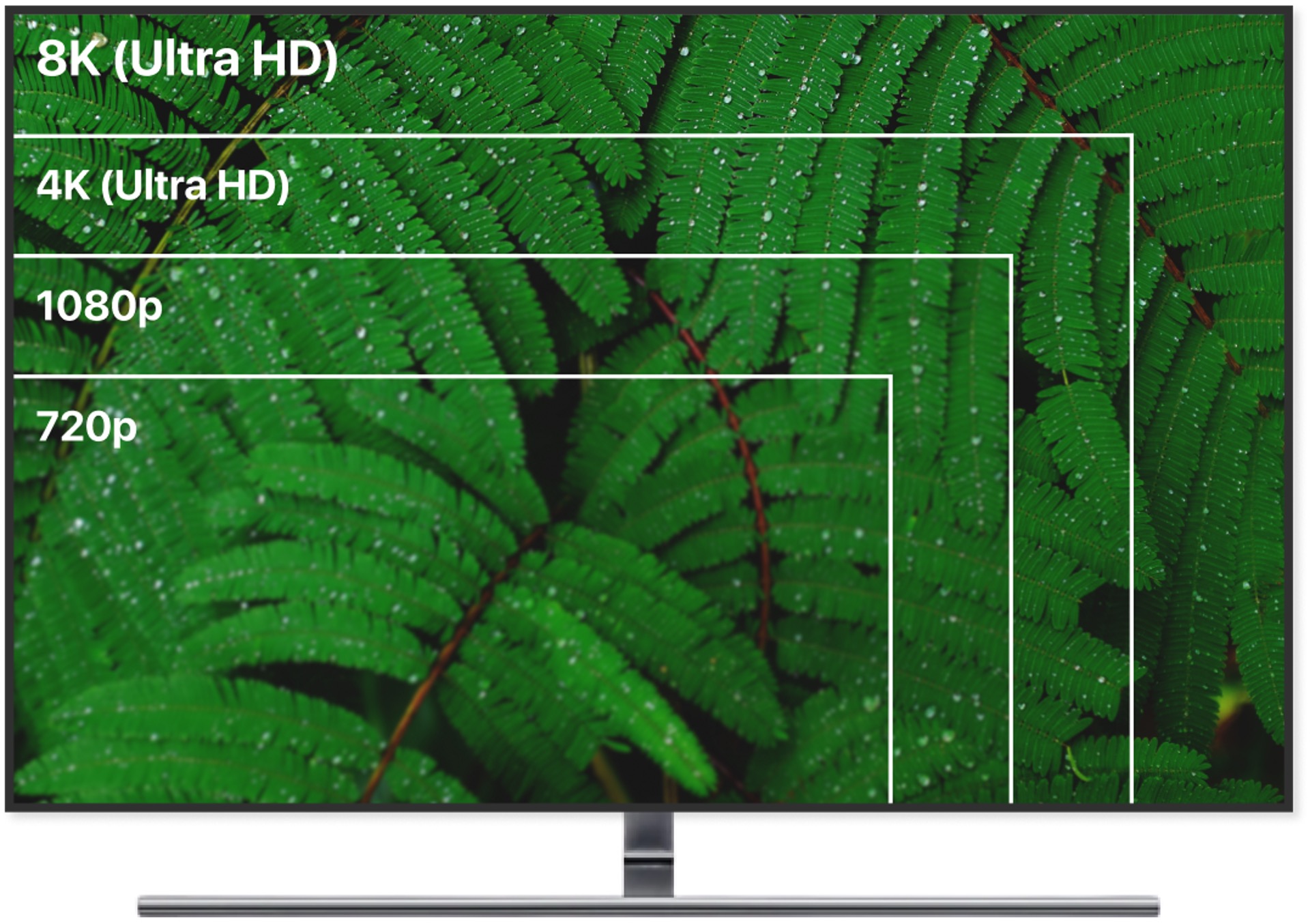Introduction
With the rapid advancement of technology, television has come a long way from the days of black and white screens to high-definition (HD) and LED TVs. These modern televisions offer immersive visual experiences, bringing our favorite movies, shows, and games to life like never before.
HD TV, short for high-definition television, and LED TV, which stands for light-emitting diode television, are two popular types of televisions that have revolutionized the way we consume media. However, it is important to understand the differences between these two types of TVs before making a purchase decision.
In this article, we will explore the definition and explanation of HD TV and LED TV, and delve into the differences in display technology, screen size and resolution, image quality, energy efficiency, and cost. By the end, you will have a clear understanding of these two types of TVs, enabling you to make an informed choice that best suits your needs and preferences.
So, let’s embark on this journey to unravel the disparities between HD TV and LED TV, and discover which one reigns supreme in the world of modern television technology.
Definition and Explanation of HD TV
HD TV, or high-definition television, refers to a television system that offers a higher level of resolution and image quality compared to standard-definition (SD) television. It allows for a more detailed and vibrant viewing experience, making it particularly suitable for watching high-quality content such as movies, sports, and nature documentaries.
The defining characteristic of HD TV is its higher resolution. While SD TVs typically have a resolution of 480p, HD TVs offer resolutions starting at 720p and can go up to 1080p or even higher. This means that HD TVs have a greater number of pixels on the screen, resulting in sharper and more detailed images.
Another important aspect of HD TV is its widescreen aspect ratio, typically 16:9. This wider aspect ratio allows for a more cinematic viewing experience, as it closely matches the dimensions of movie screens. It eliminates the black bars that were common on older TVs with narrower aspect ratios, providing a more immersive and visually appealing display.
In addition to its superior resolution and aspect ratio, HD TV also supports enhanced color reproduction and improved audio quality. Many HD TVs feature advanced technologies such as High Dynamic Range (HDR), which expands the range of colors and contrast, resulting in more lifelike and vibrant images. Furthermore, HD TVs often come with built-in surround sound systems or support for external audio setups, ensuring an immersive and high-fidelity audio experience.
It is worth noting that HD TV is now a widely adopted standard, and most modern TVs are capable of displaying HD content. With the increasing availability of HD programming from broadcasters and streaming services, HD TV has become the norm for many households across the globe, offering a visually captivating and engaging entertainment experience.
Definition and Explanation of LED TV
LED TV, which stands for light-emitting diode television, is a type of television that utilizes LED backlighting to illuminate the screen. This technology offers several advantages over traditional LCD TVs, including improved image quality, energy efficiency, and slim designs.
The main difference between LED TVs and LCD TVs lies in the way the backlighting is implemented. While LCD TVs use cold cathode fluorescent lamps (CCFLs) as the light source, LED TVs utilize an array of tiny light-emitting diodes to provide illumination. These LED lights are located behind the screen and emit light directly, resulting in better control over brightness and contrast levels.
One of the key benefits of LED TV is its superior image quality. LED backlighting allows for deeper blacks and brighter whites, resulting in improved contrast ratios and a more visually striking display. Additionally, LED TVs offer wider color gamuts and more accurate color reproduction, delivering vibrant and lifelike images.
Another advantage of LED TVs is their energy efficiency. LED backlighting consumes less power compared to CCFL technology, resulting in lower energy consumption and reduced electricity bills. This makes LED TVs an environmentally friendly option and a cost-effective choice for long-term use.
In terms of design, LED TVs are generally thinner and lighter compared to traditional LCD TVs. The LED lighting technology enables manufacturers to create slim and sleek designs, making the TVs aesthetically appealing and easier to mount on walls or place on stands. This thin form factor also facilitates better heat dissipation, preventing the TV from overheating during extended usage.
LED TVs come in various types, such as edge-lit LED and full-array LED. Edge-lit LED TVs have LEDs placed around the edges of the screen, allowing for a thinner profile, while full-array LED TVs have LEDs positioned across the entire back panel, providing better local dimming and backlight uniformity.
In summary, LED TVs offer improved image quality, energy efficiency, and sleek designs compared to traditional LCD TVs. With their enhanced brightness, vibrant colors, and slim profiles, LED TVs have become the preferred choice for many consumers seeking a high-quality and energy-efficient television experience.
Differences in Display Technology
One of the key distinctions between HD TV and LED TV lies in their display technologies. While HD TV refers to the resolution and image quality, LED TV refers to the backlighting technology used to illuminate the screen.
HD TV, as previously mentioned, focuses on delivering high-definition content with sharper details and vibrant colors. It achieves this through a higher resolution and an aspect ratio of 16:9, providing a more immersive and cinematic viewing experience.
On the other hand, LED TV employs light-emitting diodes (LEDs) as a backlight source, resulting in improved picture quality and energy efficiency compared to traditional LCD TVs. The LEDs in LED TVs offer enhanced control over brightness and contrast, leading to better black levels and brighter whites.
LED TVs can be further categorized into two types: edge-lit LED and full-array LED. Edge-lit LED TVs have LEDs placed around the edges of the screen, allowing for a thinner design but potentially sacrificing the uniformity of backlighting. Full-array LED TVs, on the other hand, have LEDs positioned across the entire back panel, providing better control over local dimming and backlight uniformity.
The display technology of HD TVs and LED TVs also affects their viewing angles. HD TVs that use LCD technology tend to have narrower optimal viewing angles, meaning that the picture quality may degrade if viewed from the side. In contrast, LED TVs tend to have wider viewing angles, maintaining consistent image quality even when viewed from different positions.
It is important to note that LED TV is not synonymous with HD TV. LED TVs can support various resolutions, including HD, Full HD (1080p), and even Ultra HD (4K), while HD TVs specifically refer to the resolution and image quality. Therefore, it is possible to have an LED TV that is not an HD TV if it supports a lower resolution.
In summary, HD TV focuses on delivering high-definition content with greater resolution and an immersive aspect ratio, while LED TV refers to the backlighting technology that enhances picture quality and energy efficiency. The choice between HD TV and LED TV ultimately depends on your preference for resolution and image quality, as well as the desired display technology and viewing angles.
Screen Size and Resolution Differences
When comparing HD TVs and LED TVs, it is important to consider the differences in screen size and resolution, as they can greatly impact your viewing experience.
HD TVs come in a variety of screen sizes, ranging from small to large. They offer resolutions starting at 720p (1280 x 720 pixels) and can go up to the popular Full HD resolution of 1080p (1920 x 1080 pixels). Some high-end HD TVs even support higher resolutions, such as Ultra HD (4K) or 8K, providing even more detailed and lifelike visuals. The screen size you choose for an HD TV will depend on the viewing distance and personal preference.
On the other hand, LED TVs also come in various screen sizes. However, LED TVs can support a wider range of resolutions. While they can also support HD resolutions, many LED TVs offer Full HD and higher resolutions, such as Ultra HD (4K) and even 8K. With the advancements in LED backlighting technology, LED TVs can deliver exceptional picture quality and clarity, especially in larger screen sizes.
With larger screen sizes, the difference in resolution becomes more noticeable. The higher resolution of LED TVs ensures sharper and more detailed images, enhancing the overall viewing experience. This is especially noticeable when watching high-definition content or playing video games.
Choosing the right screen size and resolution depends on the viewing distance and the content you typically watch. If you sit closer to the TV or enjoy highly detailed content like movies or gaming, a larger screen size with higher resolution, such as a 4K LED TV, may provide a more immersive experience. However, smaller screen sizes and HD resolution may be sufficient for casual viewing or for smaller rooms where space is a constraint.
It is important to note that the pricing of HD and LED TVs can vary depending on the screen size and resolution. Generally, larger screen sizes and higher resolutions tend to be more expensive. Therefore, it is crucial to consider your budget and requirements when deciding on the screen size and resolution of your TV.
In summary, both HD TVs and LED TVs offer a range of screen sizes, with LED TVs typically having more options for higher resolutions. While HD TVs provide a suitable viewing experience with resolutions starting at 720p, LED TVs offer the advantage of higher resolutions like 4K and 8K, resulting in sharper and more detailed images, especially on larger screen sizes.
Image Quality Differences
When comparing HD TVs and LED TVs, one of the significant factors to consider is the difference in image quality. Both types of TVs offer enhanced visuals compared to older technologies, but there are nuances in the way they display images.
HD TVs, with their focus on high-definition content, deliver stunning image quality. They offer resolutions starting at 720p and can reach up to 1080p or even higher. The higher pixel density in HD TVs results in sharper details and more vibrant colors, providing a more immersive viewing experience. HD TVs also excel in delivering smooth and fluid motion, making them ideal for watching fast-paced action scenes or sports events.
LED TVs, although not directly related to image quality, contribute to improved visuals through their backlighting technology. The use of LED backlighting allows for higher contrast ratios and more accurate color reproduction. LED TVs can achieve deeper blacks and brighter whites, resulting in an improved dynamic range and richer color palette.
Furthermore, LED TVs often feature advanced technology such as High Dynamic Range (HDR). HDR allows for a wider range of colors, greater contrast, and better highlights and shadows. This technology enhances the overall image quality, making the visuals appear more vibrant, lifelike, and detailed.
LED TVs also have the advantage of better uniformity in backlighting compared to older LCD technologies. This means that the screen is evenly lit, minimizing inconsistencies that may be noticeable in certain lighting conditions. The uniform backlighting enhances the overall image quality and ensures a more enjoyable viewing experience.
It is important to note that image quality can vary depending on factors such as content source, video processing capabilities, and calibration settings. Both HD TVs and LED TVs can provide excellent image quality if properly calibrated and paired with high-quality content sources.
Ultimately, the decision between HD TV and LED TV in terms of image quality will depend on your preferences and requirements. If you value sharpness, vibrant colors, and smooth motion, HD TVs with their high-definition resolutions are a great choice. On the other hand, if you seek enhanced dynamic range, accurate color reproduction, and improved backlighting, LED TVs, especially those with HDR support, are a preferable option.
In summary, HD TVs focus on delivering high-definition content with sharp details and smooth motion, while LED TVs provide improved visuals through their backlighting technology and advanced features like HDR. Both types of TVs offer enhanced image quality compared to older technologies, ensuring a more immersive and enjoyable viewing experience.
Energy Efficiency Differences
Energy efficiency is an important consideration when selecting a television, as it not only impacts your electricity bills but also has environmental implications. When comparing HD TVs and LED TVs, there are significant differences in energy efficiency due to the distinct backlighting technologies they employ.
HD TVs, which typically utilize LCD displays, rely on cold cathode fluorescent lamps (CCFLs) for backlighting. CCFLs consume a significant amount of power, resulting in higher energy consumption compared to other display technologies. While HD TVs have made advancements to improve energy efficiency over the years, they still consume more power compared to LED TVs.
On the other hand, LED TVs employ light-emitting diodes (LEDs) as a backlight source, which consume significantly less power than CCFLs. LED backlighting technology is renowned for its energy efficiency, resulting in lower energy consumption and decreased electricity bills. The use of LEDs allows for more precise control of brightness levels, reducing power consumption while maintaining optimal image quality.
LED TVs also have the advantage of being more environmentally friendly. With lower energy consumption, they contribute less to greenhouse gas emissions and fossil fuel usage. This makes LED TVs a preferred choice for eco-conscious consumers who prioritize reducing their carbon footprint.
It is worth noting that energy efficiency can vary within LED TVs as well, depending on factors such as the screen size and display technology used. Edge-lit LED TVs generally consume less power compared to full-array LED TVs, as they use fewer LEDs for backlighting. However, technological advancements have led to improvements in energy efficiency across all types of LED TVs.
When comparing the energy consumption of HD TVs and LED TVs, it is essential to consider the Energy Star rating. Energy Star is a program that identifies energy-efficient products, including televisions, based on strict performance criteria. TVs with an Energy Star rating are designed to operate efficiently and consume less power during both active use and standby mode.
In summary, LED TVs have a clear advantage over HD TVs when it comes to energy efficiency. LED backlighting technology consumes significantly less power compared to CCFL technology, resulting in lower energy consumption and reduced electricity bills. As eco-friendly options, LED TVs are the preferred choice for environmentally conscious consumers who seek both superior image quality and energy efficiency.
Cost Differences
Cost is an important factor to consider when purchasing a new television. When comparing HD TVs and LED TVs, there are differences in cost due to various factors, including the display technology, screen size, and resolution.
HD TVs, being a more established technology, generally come at a lower price point compared to LED TVs. The cost of HD TVs can vary depending on the screen size and resolution. Smaller screen sizes and lower resolutions, such as 720p or entry-level 1080p, are more affordable options for budget-conscious consumers.
On the other hand, LED TVs tend to be priced higher due to their advanced backlighting technology and improved image quality. LED TVs offer a wider range of screen sizes and resolutions, including Full HD (1080p), Ultra HD (4K), and even 8K. Larger screen sizes and higher resolutions often come with a higher price tag. However, it is important to note that pricing can vary among brands and models.
While LED TVs may have a higher initial cost, they offer long-term cost savings through their energy efficiency. LED backlighting consumes less power compared to the cold cathode fluorescent lamps (CCFLs) used in HD TVs. This leads to lower energy consumption and reduced electricity bills over time. Therefore, while LED TVs may have a higher upfront investment, they can prove to be more cost-effective in the long run.
It is also worth considering the overall value of the TV. LED TVs often come with advanced features such as High Dynamic Range (HDR) support, better color accuracy, and enhanced contrast ratios. These additional features contribute to a superior viewing experience, justifying the higher cost for those who prioritize image quality and advanced technology.
Additionally, it is important to factor in the brand and model when comparing the cost of HD TVs and LED TVs. Well-known brands often come with higher price tags, reflecting their reputation and quality. However, there are also affordable options available from lesser-known brands that offer decent performance and features.
In summary, HD TVs generally have a lower initial cost compared to LED TVs, making them more accessible for budget-conscious consumers. LED TVs, although priced higher, offer superior image quality, energy efficiency, and advanced features like HDR. While LED TVs may have a higher upfront investment, their cost-saving benefits through energy efficiency and enhanced viewing experience may be more favorable in the long run.
Conclusion
After exploring the differences between HD TVs and LED TVs, it is clear that both types of televisions have their unique characteristics and advantages. HD TVs focus on delivering high-definition content with sharp details and immersive aspect ratios. LED TVs, on the other hand, utilize advanced backlighting technology to provide superior image quality, energy efficiency, and sleek designs.
When it comes to screen size and resolution, both HD TVs and LED TVs offer a wide range of options to suit varying preferences and viewing distances. HD TVs typically start at 720p resolution and can reach up to 1080p, while LED TVs often support higher resolutions like 4K or even 8K, providing more detailed and lifelike visuals, especially on larger screen sizes.
In terms of image quality, HD TVs excel in delivering high-definition content with sharp details and smooth motion. LED TVs, with their advanced backlighting technology, offer enhanced visuals, including deeper blacks, brighter whites, and wider color gamuts. LED TVs also often feature High Dynamic Range (HDR), further enhancing the image quality and color reproduction.
When considering energy efficiency, LED TVs have a clear advantage over HD TVs. The use of LED backlighting technology results in lower energy consumption, leading to reduced electricity bills and a smaller environmental footprint. LED TVs are more environmentally friendly and provide cost-saving benefits in the long run.
As for cost, HD TVs generally have a lower initial price compared to LED TVs. However, LED TVs offer superior image quality, energy efficiency, and advanced features, justifying the higher cost for those who prioritize these factors. Additionally, the long-term cost savings through energy efficiency should also be considered when making a purchasing decision.
In conclusion, the choice between HD TV and LED TV depends on individual preferences, requirements, and budget. HD TVs are a great option for those seeking high-definition content and an immersive viewing experience. LED TVs, with their advanced backlighting technology and superior image quality, are a preferable choice for those who prioritize energy efficiency, vibrant visuals, and advanced features like HDR. Ultimately, both HD TVs and LED TVs provide immersive entertainment experiences, allowing you to enjoy your favorite movies, shows, and games in stunning detail and clarity.







